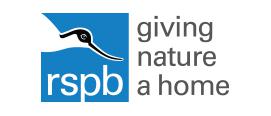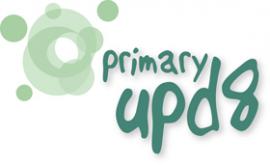Animal Magic!
The wonderful world of animals provides an engaging, stimulating topic within which children can learn science. From the animals that exist in the children's locality, observing them and providing them with animal-friendly habitat where they can be safe, survive and thrive, to how to care for the animals that live in their homes alongside many of them, or even in their classrooms! This list consists of lesson plans, activities and ideas to support the teaching of science through the topic of Animals. It contains ideas for how to link science to the topic, tips on using the resources, suggestions for further use and background subject knowledge to support teachers in delivering the science objectives through this topic.
Visit the primary resources for cross curricular topics webpage to access all resource lists:
https://www.stem.org.uk/cross-curricular-topics-resources
A First Look at Living Things
This beautifully illustrated resource includes activities and discussion points linking to all aspects of KS1 biology. Two learning focuses, 'Are you my mother?' (pages 2-3), an animal young and adult parent matching activity, and 'Taking care of animals' (pages 20-21) exploring pets and how to look after them.
Big Schools' Birdwatch Activities
These activities, aimed at primary children, link to aspects of design and technology and literacy. Children follow recipes to make a variety of food for birds including pine cone lardy seed feeders, suet nut log and edible pictures.This activity is part of the Big Schools’ Birdwatch pack, provided by the RSPB.
Big Schools' Birdwatch Games
The second of two games is a matching pairs game, which provides cards of various common birds. Perfect for encouraging children to learn the names of common birds seen frequently around the grounds of most schools. Practising naming and identification on a regular basis will ensure that children are ready to participate in the Great Schools' Birdwatch in February every year.
Big Schools' Birdwatch Stories
This resource contains two bright and colourful story books which look at identification of birds and the different types of food eaten by different birds. The presentations, ‘Bouncy Blackbird’ and ‘Cheeky Sparrow’ could provide a starting point for an investigation about beak type and food preference of different birds or carrying out a survey on identifying birds.
Ladybirds
This activity, aimed at younger primary learners, looks at the lifecycle and habitat of a ladybird, whilst working scientifically observing, comparing and recording information on ladybirds. The activity includes observation of the changes that occur during the life cycle of a ladybird and the opportunity to take part in a research study, the UK Ladybird Survey, a citizen science project.
The resource contains full teacher guidance on running activities and games including: a spot the difference game, a ladybird hunt and a comparison activity looking at similarities and differences between ladybirds and butterflies. All activities provide opportunities for children to work scientifically and to develop their thinking skills.
Minibeasts Activity Book
The Minibeasts Activity Book comprises photocopiable sheets with teachers' notes on activities all relating to minibeasts. The resources are written for mixed ability classes and an extension is provided for the more able. They relate directly to topics on animals in the local environment, habitats, interdependence and adaptation and life cycles. The activities look at ways we can observe minibeasts, including the importance of observation over time, behaviour and the effect of food or other environmental factors on minibeasts. The activities are aimed at Key Stage Two but some may be adapted for use in Key Stage One.
The activities are:
*How big is a minibeast? Carry out simple calculations relating size, area and volume
*Investigate body form, simple forces and stability
*What makes an insect? Build an insect and describe and compare different minibeasts
*Big changes - observe the lifecycles of a blow fly or meal worm
*Careful capture - collect minibeasts using pitfall traps and pooters then make careful observations
*Sensible sample - estimate the size of a population by playing a ladybird game
*Earthworms - observe and draw earthworms
*Shell shapes - keep snails and observe their preferences for food then make plasticine shells and compare their variation
*A living fossil - observe woodlice and look at their choice of habitat
*Millipede movement - classify millipedes and study their movement
*Spider webs - collect spider webs and make flick books to show web development
*Keeping insects - keep a diary of the changes seen in sample of fruit flies over time
*Dancing bees - investigate how insects are attracted to different colours
There is also a sheet of common minibeasts and facts about them.
PDSA Caring for Pets
The PDSA has an excellent website that provides some great resources for primary teachers to use, as they teach children about pets and how to best look after them. Short films and interviews with vets and veterinary nurses also feature and these could provide stimulus for role play. Why not create a 'Veterinary Surgery' in the classroom, kitted out with vet equipment and paraphernalia (white coat, stethoscope, mock medicines, bandages and stuffed toy animals etc)? Children might also create pet care posters, leaflets or even a 'how to....' short film to share with parents or friends.
Nocturnal Animals (Age 5 to 7)
Produced by ARKive, this hands-on activity is designed to teach 5-7 year olds about nocturnal animals and the senses they employ to navigate life in the dark. Humans rely heavily upon the sense of sight and these activities explore the ways other animals have become adapted to life where and when light is less readily available.
The first activity involves using a number of small drawstring bags 'feely-bags' containing mystery objects. Children are encouraged to engage their sense of touch in order to describe and identify each object without looking inside the bags. They then discuss what they can feel in the bags using adjectives to describe the texture, weight and shape of each mystery object.
For the second activity, children listen to sound recordings of different animals and try to match the sounds to the images of animals on the worksheet provided.
In both activities, children have their eyes shut to encourage them to rely solely on their other senses to identify the objects and sounds.
Bumblebee conservation trust
One of the animals most frequently seen around our school grounds is the bumblebee. Bees of many types are relatively easy to spot and creating a 'bee-friendly' habitat will demonstrate very directly the impact that children can have on their environment and the animals that live there. The Bumblebee Conservation Trust provides lots of useful information and ideas on their website. 'Bumble Kids' features content that is aimed specifically at KS1 children, from quick identifiers to advice on which plants are best to include in a bee-friendly garden.





